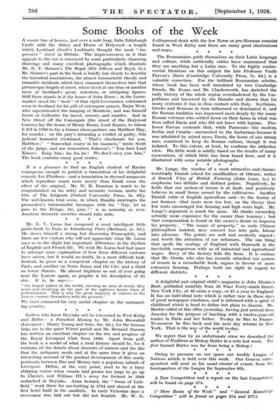The Roumanians pride themselves on their Latin language and culture,
while unfriendly critics have maintained that they are anything but a Latin race. To the highly contro- versial literature on this subject the late Professor Vasile Parvan's Dacia (Cambridge University Press, 7s. 6d.) is a valuable correction. For the brilliant Roumanian scholar, whose book has been well translated by two Cambridge friends, Mr. Evans and Mr. Charlesworth, has sketched the early history of the whole region overshadowed by the Car- pathians and traversed by the Danube and shown that for many centuries it was in close contact with Italy. Scythian, Greeks and Romans in turn influenced or dominated it, and the Roman tradition was impressed most deeply by the many Roman veterans who settled down on their farms in what was then called Dacia and who did not leave with legions. Pro- fessor Parvan contends that, while Pannonia—the modern Serbia and Croatia—succumbed to the barbarians because it was inhabited by mixed races, Dacia, the home of one strong rate, contrived to keep its Roman culture, though it was isolated. To this extent, at least, he confirms the orthodox view. His little work is solidly based on the results of many excavations, of which little has been heard here, and it is illustrated with some notable photographs.






























 Previous page
Previous page